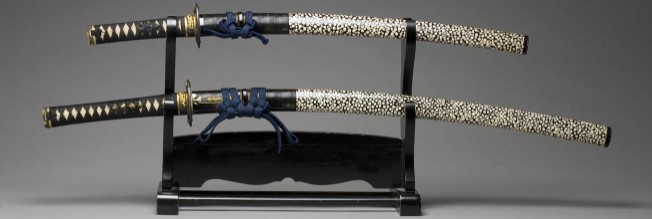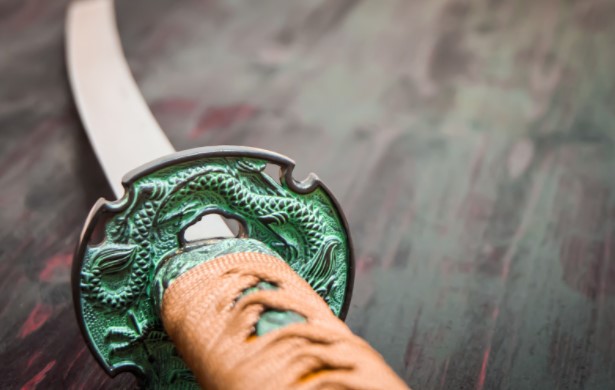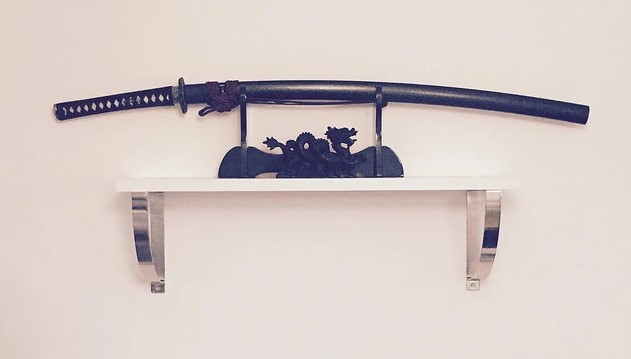To other citizens of the world, A katana is a symbol of one of the Japanese cultures that have been benevolently shared with the world. Social media and tourism have helped a great deal with this. Perhaps, as a souvenir, you have got yourself one and are clueless about how long it takes a katana to rust? Well, hang onto your kimonos as we look into this.
Like most swords, the katana can rust in a short time. All that stands between the metal blade and rust is the razor-thin layer of oil left behind after sharpening. This protective film will last only a day or two, so katanas must be stored right and cleaned immediately after use to prevent them from rusting.
A Katana Sword is a Japanese long sword that will oxidize and rust if not maintained and properly cared for. For example, a steel Katana will rust if not oiled in certain spots. For many years it was considered sacrilege to do any maintenance on a Katana, such as sharpening the blade and cleaning it regularly can help preserve the blade from rust.
Therefore, below, you can learn more on this topic and ways you are expected to protect and prevent the device from getting rust.
Contents
What Is A Katana?
A Katana is a traditional Japanese sword used mainly in feudal Japan. It was produced in the Nanboku-chō period(1336-1392). It belongs to the Nihontō family of swords. Its features consist of a double-handed hilt with a long one-sided blade. This earned it the compound combination of its name, Kata (one-sided) and na (blade).

The Katana is wielded by Samurais, the Onna-musha, Ninjas, and Iaido practitioners. According to the Bushido warrior code, a samurai is never to part with his Katana. It is made ready before birth and continues its use after death. Having to rely on a weapon so much only proved its reliability. One which stemmed from characteristics of its steel.
What Steel Is A Katana Made Of?
Katana’s steel is none other than Tamahagane steel. The Tamahagane steel found In Japan is steel with a decent concentration of carbon in it. It contains about 1.5 percent of carbon. It’s imperative to note that the correct level of carbon is essential in sword-making. Since a high carbon content results in a sword’s strength. A characteristic the Katana isn’t void of.

During the forging process, two types of steel are hammered in place. High carbon and low carbon steel. The high carbon is used to make the outer part which comprises the razor-sharp feature. Low carbon, on the other hand, is used to make the Katana’s core which is responsible for shock absorption. The meticulous craftsmanship creates a Katana worthy for a Samurai to wield.
How Long Does It Take A Katana To Rust?
A katana can go for years without having rust plague its shiny mirror-like surface. It all depends on how it is taken care of. The climate contributes to speeding up or slowing down rust encroachment, assuming the Katana is deprived of proper care.

It takes about three to four months for rust to attack in dry weather and way less in humid weather.
A katana is forged from rare steel found within Japanese territory by traditional Japanese swordsmiths. It is called Tamahagane steel which has a high carbon content. This steel like every other steel stands the chance of being affected by rust. How long, however, depends on certain climatic factors.
Tips to Keep Rust From Your Katana?
There are several ways to keep your sword rust-free.

- Keep It Dry: Rust is an iron oxide that is brought about by the oxidation of iron. That is, rust occurs when Iron is exposed to water, oxygen, or sunlight. Iron is a property in steel and it reacts with these elements to cause rust. By keeping the sword dry, we keep rust at bay.
- Apply Wax Or Oil: Waxing and oiling make it resistant to rust. Getting a product that contains a hundred percent mineral oil or gun oil will do the trick.
- Clean After Handling: After a long day of slicing and dicing, getting a line-free cloth to wipe the blade would be best. It’ll save you the stress of having to deal with reddish spots on gleaming steel later on.
- Storage: After handling comes storage. It would be best to store the sword in a room with its relative humidity levels at around forty to fifty percent. If the relative humidity is higher than sixty percent, it means that RM is too high. And a high relative humidity is a breeding ground for rust and corrosion.
Frequently Asked Question (FAQ’s)
Can You Remove Rust From a Sword?
With a steel brush and steel wool, light rust can be purged from steel. Oiling the sword and gradually brushing it would restore that gleaming shine that was lost.
What Is Special About Tamahagane Steel?
Tamahagane steel is used by Japanese swordsmiths to forge a Katana. ‘Tama’ means a precious jewel while ‘hagane’ means steel. Tamahagane steel has a high level of carbon which makes a stronger steel.
Conclusion
A katana is forged with rare steel during a 15-day window, by different master craftsmen. This historic work of art, sadly, can undergo the effect of rust like every other type of steel. The time varies depending on either dry or humid weather conditions.
Rust is formed when water and air come in contact with iron. In this weather, rust takes less than three months to form. In dry weather, however, it takes about three to four months because of the reduced moisture in the atmosphere. Once again, this is only when it isn’t managed properly. To avoid the insult of rust to this glorious blade, handle it with care and reverence.

